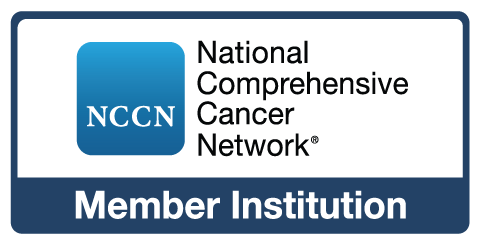PRIMARY OBJECTIVE:
I. To determine investigator assessed progression-free survival using Response Evaluation Criteria in Solid Tumors (RECIST) version (v)1.1 (non-inferiority) for one versus (vs.) two years of maintenance olaparib.
SECONDARY OBJECTIVES:
I. To evaluate overall survival (OS360) in the modified intent to treat (ITT) population, with time at risk for progression/death starting 360 days after randomization.
II. To evaluate progression-free survival (PFS), PFS2 and overall survival (OS) in the ITT population.
III. To evaluate PFS, PFS2, and OS in the as-treated population. IV. To evaluate toxicity, including rates of myelodysplastic syndrome (MDS), acute myeloid leukemia (AML), and other secondary malignancies, in the safety population.
EXPLORATORY OBJECTIVE:
I. To evaluate the moderating effect of physician-choice bevacizumab (as stratified) on randomized treatment effect estimates.
TRANSLATIONAL OBJECTIVES:
I. To assess BRCA reversion mutations in circulating tumor deoxyribonucleic acid (ctDNA) as a predictor of poor response in the BRCA mutated (BRCAm) population.
II. To correlate a combined assay assessing quantitative BRCA1 and RAD51C promoter methylation and pathogenic variants in core homologous recombination repair (HRR) genes with clinical homologous recombination deficiency (HRD) testing and outcomes in the BRCA wildtype (BRCAwt) population.
OUTLINE: Patients are randomized to 1 of 2 arms.
ARM I (REFERENCE): Patients receive olaparib orally (PO) twice daily (BID) on days 1-21 of each cycle. Cycles repeat every 21 days for up to 2 years in the absence of disease progression or unacceptable toxicity. Patients may also receive bevacizumab IV on day 1 of each cycle. Cycles of bevacizumab repeat every 21 days for up to 1 year in the absence of disease progression or unacceptable toxicity. Patients also undergo blood sample collection and computed tomography (CT) and/or magnetic resonance imaging (MRI) throughout the study.
ARM II (EXPERIMENTAL): Patients receive olaparib PO BID on days 1-21 of each cycle. Cycles repeat every 21 days for up to 1 year in the absence of disease progression or unacceptable toxicity. Patients may also receive bevacizumab IV on day 1 of each cycle. Cycles of bevacizumab repeat every 21 days for up to 1 year in the absence of disease progression or unacceptable toxicity. Patients also undergo blood sample collection and CT and/or MRI throughout the study.
After completion of study treatment, patients are followed up every 3 months for 2 years, then every 6 months for 3 years.
Inclusion Criteria:
* Patients with newly diagnosed, pathologically confirmed, Federation of Gynecology and Obstetrics (FIGO) stage III or IV ovarian cancer of the following types:
* High grade serous
* High grade endometrioid, and/or
* Other epithelial ovarian cancer with BRCA1/2 deleterious alteration (germline or somatic)
* Submission of pathology report is required
* Ovarian cancer = ovarian, fallopian, or primary peritoneal cancer
* Patients must have:
* Documented variant (tumor or germline) in BRCA1 or BRCA2 that is predicted to be pathogenic or suspected pathogenic (deleterious alteration)
* Submission of testing report is required. OR
* BRCA 1/2 wildtype AND known HRD deficient tumor determined by any commercial or academic, Clinical Laboratory Improvement Act (CLIA)-certified laboratory (e.g., Myriad MyChoice©)
* Submission of testing report is required
* Patient must have undergone cytoreductive surgery (primary or interval)
* Patients must have completed first line platinum-based therapy prior to registration:
* Platinum based chemotherapy course must have consisted of a minimum of 4 treatment cycles and a maximum of 9, although it is strongly recommended that patients receive at least 6 cycles unless medically contraindicated
* For those receiving less than 6 cycles of platinum-based therapy, the reason for this must be documented and could include hematologic toxicity or non-hematologic toxicities directly related to therapy
* Intravenous, intraperitoneal, or neoadjuvant platinum-based chemotherapy is allowed; for weekly therapy, three weeks are considered one cycle
* Patients must not have received an investigational agent during their first line course of chemotherapy
* Patients must have, in the opinion of the investigator, no clinical evidence of disease progression following completion of this chemotherapy course (partial or complete response to platinum-based chemotherapy)
* Patients with treated brain metastases are eligible if follow up brain imaging after central nervous system (CNS) directed therapy shows no evidence of progression following completion of this chemotherapy course (partial or complete response to platinum-based chemotherapy)
* Patients must be randomized at least 3 weeks and no more than 12 weeks after their last dose of chemotherapy (last dose is the day of the last infusion of platinum agent)
* No previous treatment with a PARP inhibitor, including olaparib, niraparib, and rucaparib
* Age ≥ 18
* Eastern Cooperative Oncology Group (ECOG) performance status of ≤ 2
* Not pregnant and not nursing
* Absolute neutrophil count (ANC) ≥ 1,500 cells/mm\^3
* Platelets ≥ 100,000 cells/mm\^3
* Hemoglobin ≥ 9 g/dl
* Creatinine clearance (CrCL) of \> 30 mL/min by the Cockcroft-Gault formula
* Total bilirubin ≤ 1.5 x institutional upper limit of normal (ULN) (patients with known Gilbert's disease who have bilirubin level ≤ 3 x institutional ULN may be enrolled)
* Aspartate aminotransferase (AST) and alanine aminotransferase (ALT) ≤ 3 x institutional ULN
* Patients with known history or current symptoms of cardiac disease, or history of treatment with cardiotoxic agents, should have a clinical risk assessment of cardiac function using the New York Heart Association Functional Classification. To be eligible for this trial, patients should be class 2B or better
* No active infection requiring parental antibiotic(s)
* No current evidence of intra-abdominal abscess, abdominal/pelvic fistula (not diverted), gastrointestinal perforation, gastrointestinal (GI) obstruction, and/or need for drainage nasogastric or gastrostomy tube
* No current inability to swallow orally administered medication
* No history of myelodysplastic syndrome and/or acute myeloid leukemia
* No history of allogeneic bone marrow transplant
* No concomitant use of strong or moderate CYP3A inducers
* No known hypersensitivity to olaparib or any of the excipients of the product




